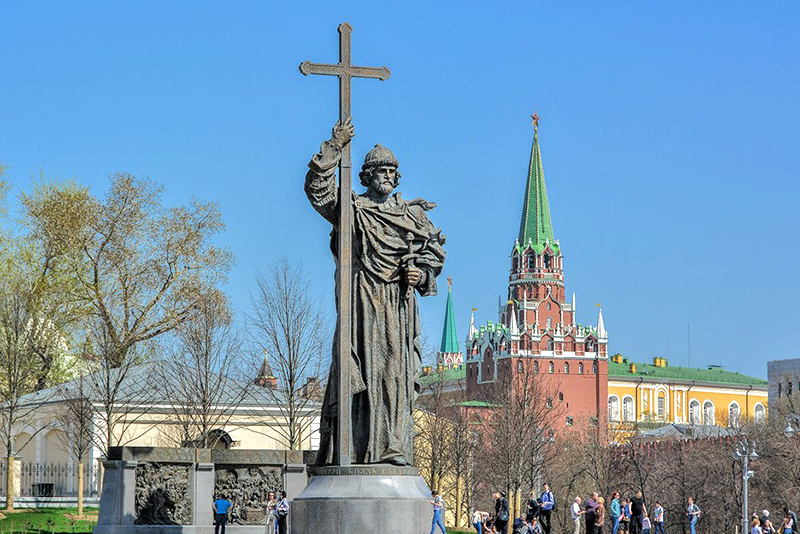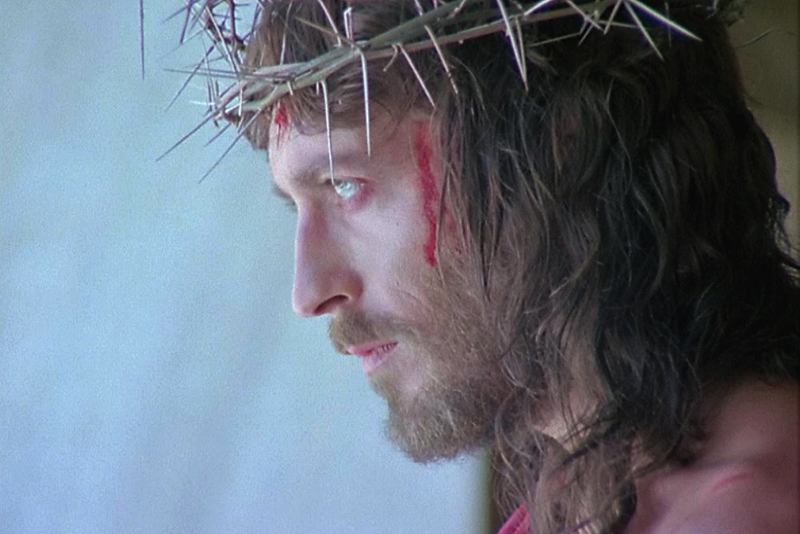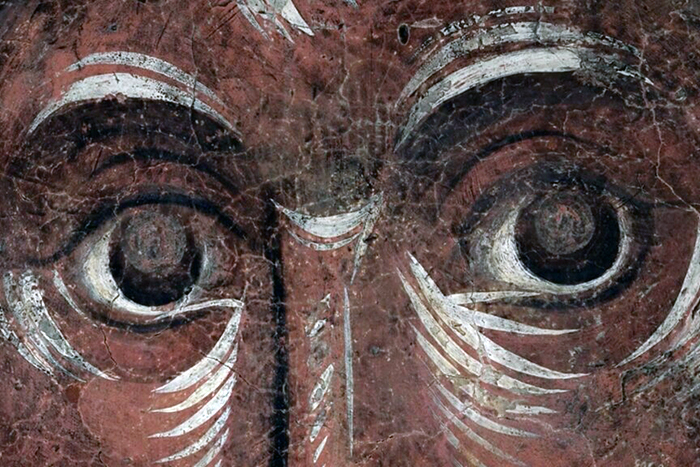
The Divine Light is one of the main theological notions in iconography. The teachings of the Hesychasts imparted a special depth, sharpness, and fullness to the experience of Light in the icon. Light becomes, if we can put it this way, the “main character” of icon painting in the 14th century. Therefore, the work of icon painters of the Golden Age of Russian iconography – Theophanes the Greek, Andrei Rublev, Dionysius – cannot be understood apart from the ideas of Hesychasm.
Among the most remarkable examples of mural painting that determined the spirit of the epoch is the first known Russian piece by Theophanes the Greek – frescoes in the Church of the Transfiguration of the Savior on Ilyina Street in Novgorod: the décor and the style of which systematically embodied the ideas of acquiring the Divine Light, the Tabor Fire, by continuous “noetic prayer” and participation in the Liturgy.
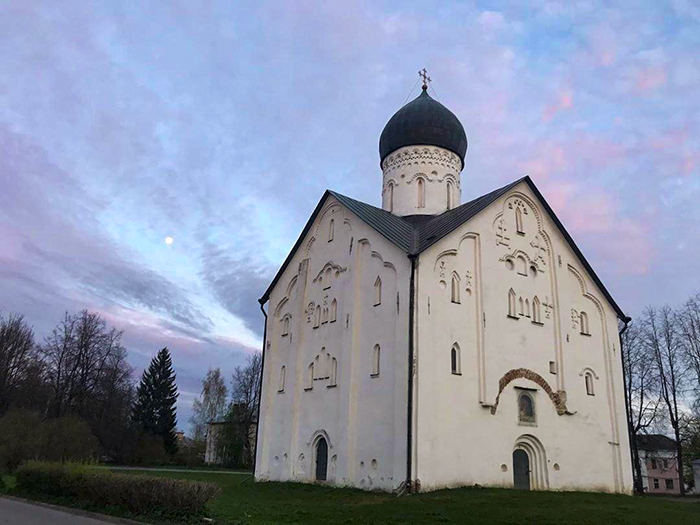
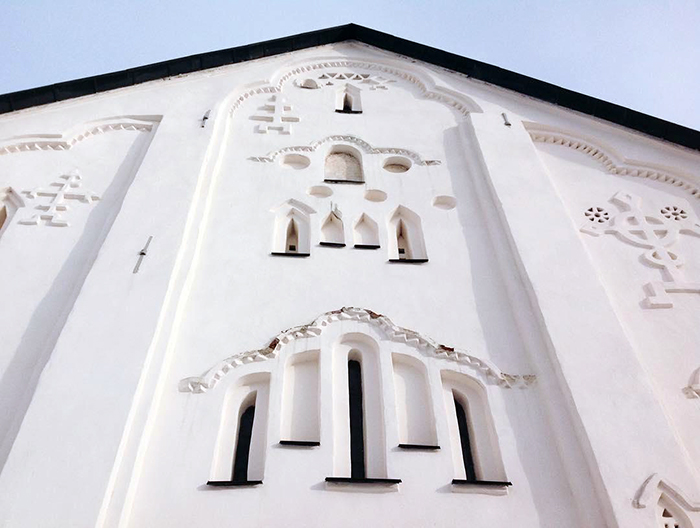
The dominant image in the temple space is Christ the Pantocrator depicted in the dome. His wide open eyes seem to sparkle with lightning. This image alludes to the words from the Holy Scriptures Our God is a consuming fire (Hebrews 12:29) and I am come to send fire on the earth (Luke 12:49).


According to Theophanes, who was a Hesychast, God is first of all a Light, but this Light manifests itself as Fire. This fire puts the world to test, the world is judged by this fire, this fire burns all kinds of untruth. It divides creation into light and darkness, the celestial and the earthly, the spiritual and the emotional, the created and the uncreated.
Hence the pictorial language of Theophanes: he reduces the whole palette to a dichotomy of sorts; we see how lightnings of lime flashes (that represent light or fire) appear on an ocher and clay background (the color of the earth). Everything is painted incredibly vigorously, with some hypertrophied effects and with enhanced semantic accents.
The icon The Apparition of Three Angels (Abraham’s Hospitality) is painted on the eastern wall of the aisle in honor of the Holy Trinity.
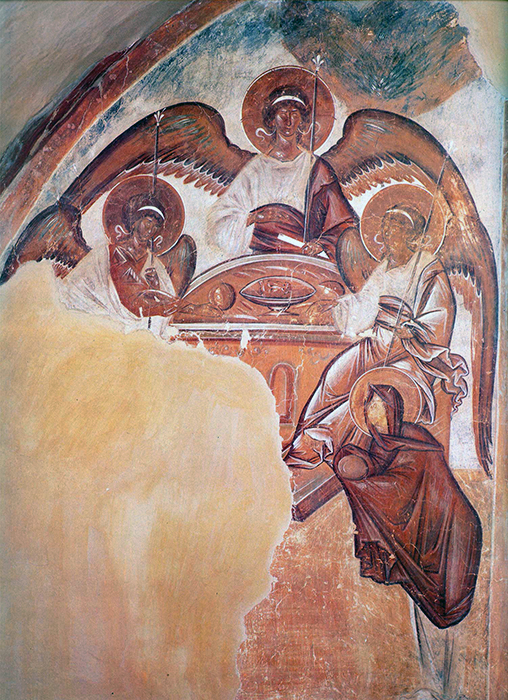
Abraham and Sarah are portrayed at the bottom of the fresco as they prepare a meal. The upper part shows the image of the Holy Trinity – three angels around the sacrificial meal. Theophanes is committed to monochromaticity – even the images of the Angels are painted in two colors: ocher and white. The figures and the background in general are painted in brown, while white marks the main accents – the contours of halos, highlights on wings, staffs with shamrocks at the tips, hair bands, bright strokes that add movement to the faces and eyes. The fact that the pupils in the eyes of the Angels are not painted but instead they have bright white strokes draws particular attention.
The walls contain images of stylites and hermits – men of prayer who fled the world to practice silent contemplation in solitude – on three sides. They all stand before the Holy Trinity. The intensity of white increases before our eyes from image to image, and this is also due to the fact that Theophanes the Greek likely aimed to show the various stages of man’s theosis, with St. Macarius of Egypt at the highest level.
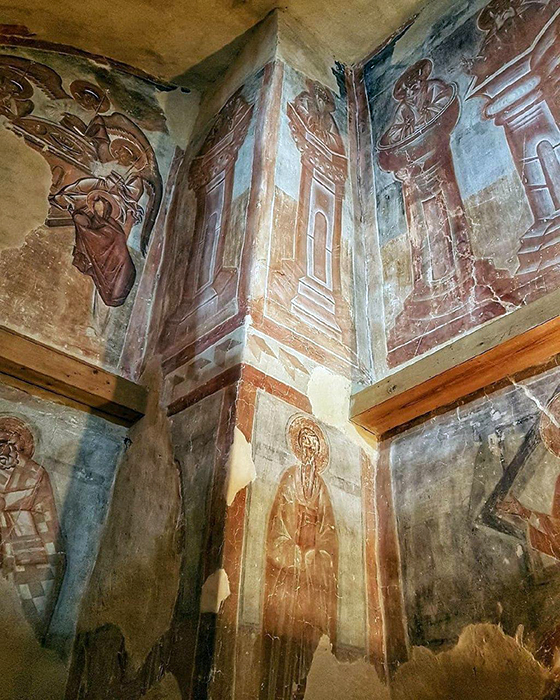

His elongated candle-shaped figure is covered with light like a white flame; he is a pillar of light. The light embraces the figure so much that its contours are almost indistinguishable. The face painted with ocher and arms put forward in front of the chest with palms open outwards stand out on the white figure. This is a posture of acceptance of grace and openness. The white glare is painted on the face of Macarius, but his eyes are not marked at all. This strange method is chosen intentionally again: the saint does not need bodily eyes; he sees God with his inner (spiritual) eyes. He does not look at the outer world, he is all inside. St. Macarius lives in the light, he himself is this light.
The face and hands against the background of light, in which the contours of the saint’s figure are barely visible, is an image of exceptional power found by Theophanes.
It is a classic illustration of Orthodox mystical experience: an ascetic is immersed in light, in divine reality, in the course of his fellowship with God, but he does not dissolve like salt in water (as Oriental religions teach, for example), but always retains his own identity.
Thanks to the vivid imagery of the artistic language of Theophanes the Greek, his art becomes a veritable statement of the Orthodox spiritual experience that was still little known in Russia by that time.

